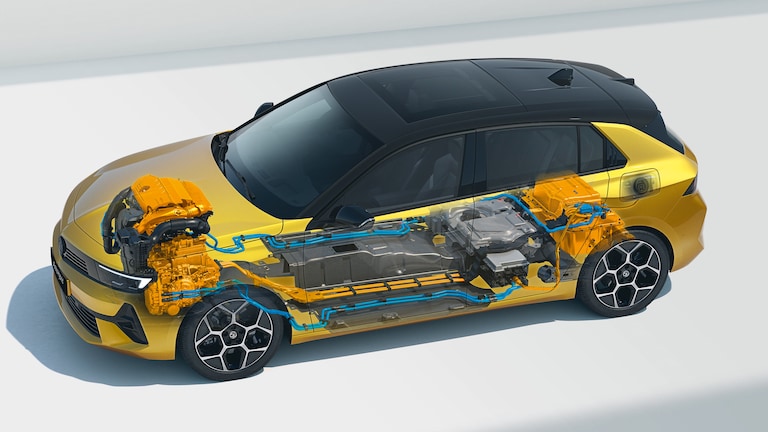Experience Hybrid innovation: Vauxhall’s Plug-In Hybrid (PHEV) and Mild Hybrid (MHEV) models
Enjoy lower emissions, better fuel efficiency, and a smarter driving experience with Vauxhall’s hybrid technology
Enjoy lower emissions, better fuel efficiency, and a smarter driving experience with Vauxhall’s Hybrid technology
Explour our Hybrid solutions, ranging from plug-in hybrids and mild hybrids
Which Hybrid suits you?
|
Plug-in Hybrid
|
Mild Hybrid
|
|
|---|---|---|
|
How does it work?
|
Combines a petrol engine with a larger electric motor
|
Combines a petrol engine with a smaller electric motor
|
|
How does it charge?
|
Requires plugging in to charge the battery
|
No charging required as it self-charges through regenerative braking
|
|
What is the range?
|
No electric-only range, petrol engine supported by electric motor
|
Electric-only range for short trips (usually 30-45 miles)
|
|
Is petrol required?
|
Yes
|
Yes
|
See how far your hybrid vehicle range will take you, and what you can do to maximise your range.
Corsa electric
Mokka electric
Grandland Hybrid
Get the Most from Every Charge

Driving style
The two factors that affect your range the most are your speed and your acceleration. To become an electric pro, follow this advice and get some serious range.
- Avoid harsh braking
- Turn off Sport Mode when you don’t need it
- Drive at a moderate speed and avoid sudden acceleration
- When motorway driving, follow a vehicle that drives consistently, like a lorry, at a safe distance
- When planning your route, try to avoid large, steep hills

What you carry
The more weight on board, the more charge you’ll use.
- Remove accessories you don’t use
- Make sure there’s no unneeded stuff on the back seats or in the boot
- If you’re not using your roof rack, take it off. It’s a real drag
Your tyre pressure
Making sure your tyres are the right pressure will help you go far. Flatter tyres burn up energy and shorten the distance you can cover with a full charge.
- Check your tyre pressure at least once a month and before long journeys. You’ll find the recommended pressure in your vehicle’s handbook
- If they’re low, head to your nearest service station and top-up to the recommended levels
















